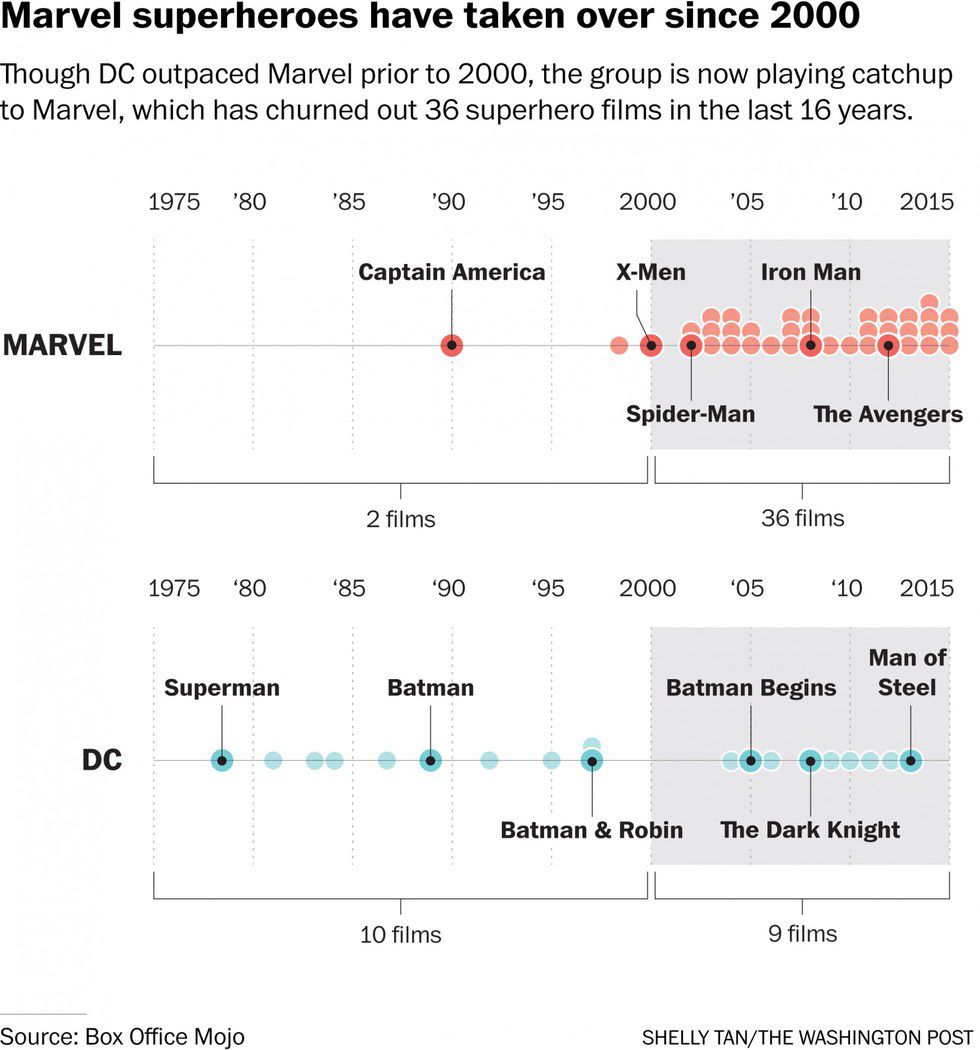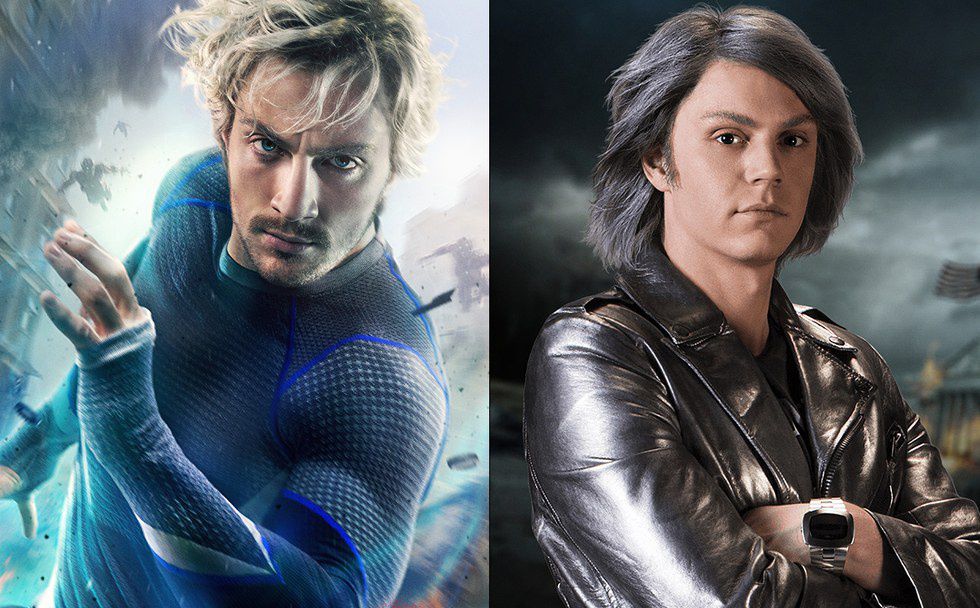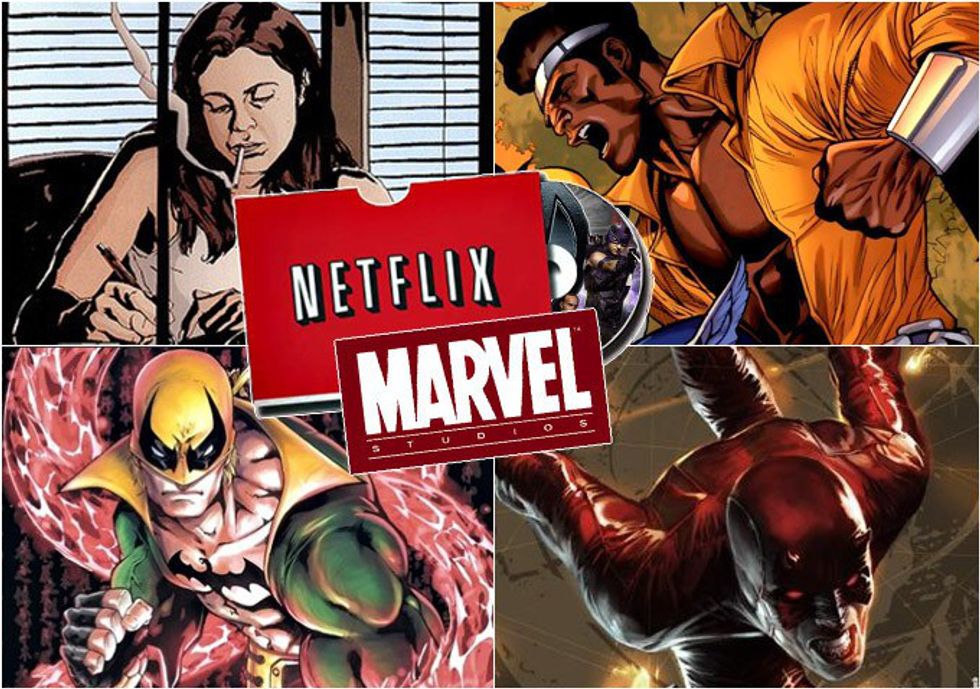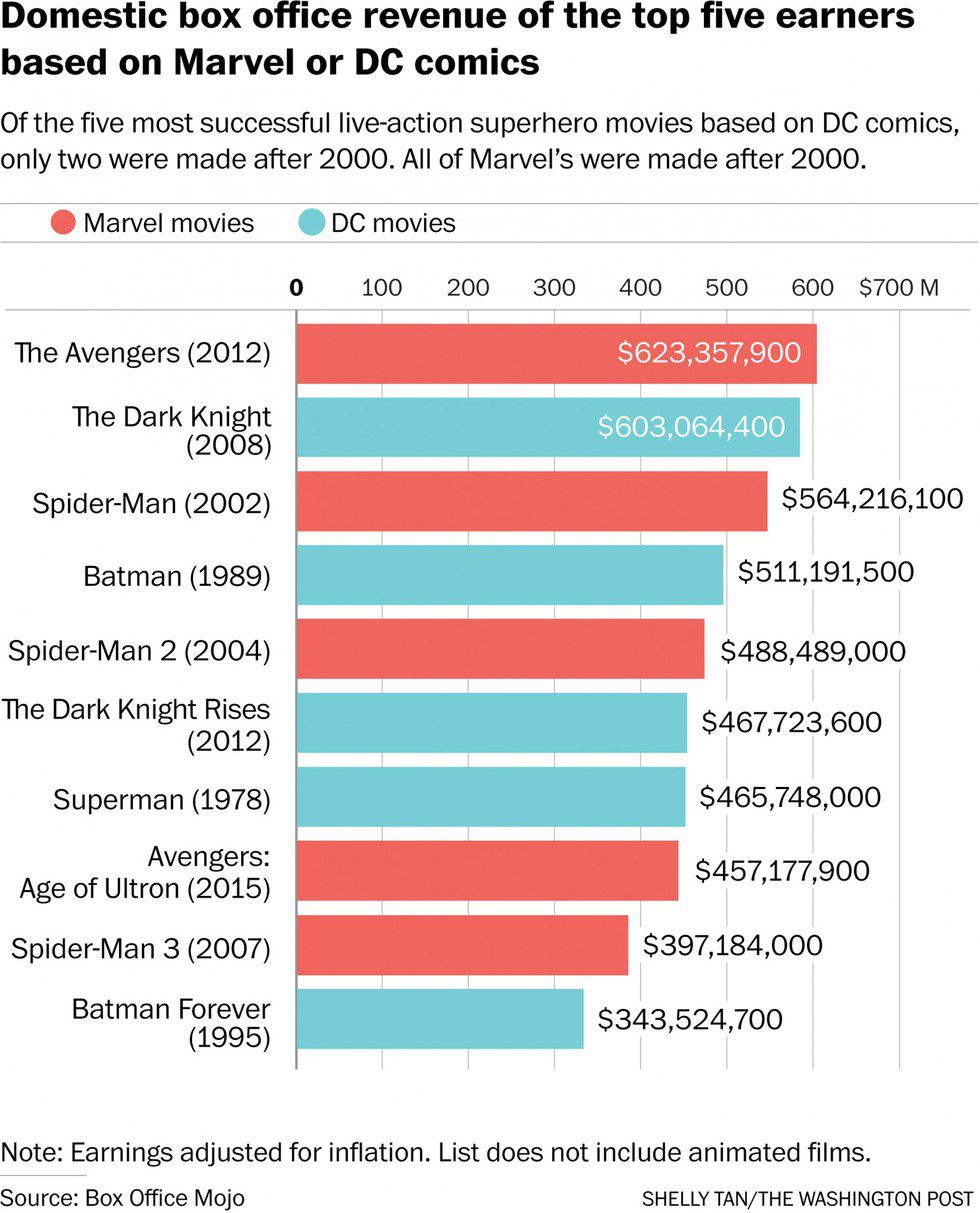With the recent release of the much anticipated film, "Batman v. Superman: Dawn of Justice," many were expecting the ultimate comic book movie. The caped crusader going toe to toe with the man of steel? It just seemed too good to be true. Recent reviews have been piling in, at the current time, the submitted reviews on Rotten Tomatoes’ rating is at a very low 30 percent. Two largely popular characters were deemed a terrible movie, so will this begin the stepping stone for a lack of comic book movies? A film driven on complex characters and a weak storyline—is that not what all comic book movies are?
With about eight more months left in 2016, there is a probable amount of five large blockbuster CBMs that are slated to appear on the cinematic screen this year. The overproduction of this genre of movies is astonishing, every studio wants them, and they really produce loads of cash, even if sometimes they are considered a flop. But is there is such thing as too much? Will these movies, even rich with original characters/material, continue to be appealing?
What is a Comic Book Movie?
There always seems to be one playing in the theaters every time anyone wants to the go the movies. But what are they? The movies themselves have created its own genre. Combining the likes of action, thriller, suspense, and romance into a movie that projects mainly to the male demographic defines what a CBM truly is. The movies themselves follow a character/team of characters taking down a menacing villain who only wants to make the fantasy world a living hell. Then when the movie is over, coming the post-credit scenes that setup another movie within that universe. It seems like a never-ending situation, and even if a trilogy of movies come to an end, the idea of an eventual reboot always lingers in the air.
Separate Universes
Marvel and DC movies do not share any compatibility whatsoever. Both have separate universes and mass amounts of characters and storylines within them. And then there are separate companies that own specific characters and storylines, making everything even more confusing for the general audience. For example, Disney owns Marvel and most of its motion pictures, like "The Avengers," but characters like Spider-Man and the X-Men are owned by Sony and 20th Century Fox respectively. That is why you might not see any of these characters interact.
Well, that was the case until Sony made a deal with Disney/Marvel to add Spider-Man into their universe. "Avengers: Age of Ultron" used the character Quicksilver, a man genetically tested on who garners the ability to run at super speeds while "X-Men: Days of Future Past" used the same character, except he was a mutant instead. See, X-Men owns any variation of characters that can be counted as a mutant, and Quicksilver falls in that category; however, "The Avengers" were able to use that character because he was a crucial member of that team during the original comic book run. Marvel just had to change how he got his powers and could not use any word associated with mutant.
And to make it even more confusing, the Netflix TV shows like "Daredevil" and "Jessica Jones" contribute to the Marvel Cinematic Universe. All marvel TV shows are shared with the movie universe, but the TV shows utilizing DC characters (Arrow and the Flash) are not connected to the movies.
*Spoiler* So if you watched "Batman v. Superman: Dawn of Justice" and saw the Flash played by Ezra Miller instead of Grant Gustin, that is why. If these movies have so much connections to other subjects of viewing materials, why do they remain popular? You would have to watch what happened in "Iron Man 3" to know what kind of character he is in "Captain America: Civil War." It all just seems too confusing, but these movies sell like crazy.
Profit, Profit, and More Profit
CBMs make so much money that they can fund other movies in the company. On a budget of $250 million, "Avengers: Age of Ultron" domestically made $457 million and worldwide made $1.4 billion. This gives Disney ample amount of money to make any other projects, reinvest into projects that are struggling, or continue the path of creating movies that produce more money that can be counted.
The Same Plot?
Most CBMs deal with a linear plot of a misunderstood individual or group of them fighting a larger being wanting to cause destruction on anyone who has done them wrong. Usually it becomes the general population for out casting them. The good guys win, sometimes at a large cost of losing someone very close to them. But they beat the bad guy, either sending him to an unknown jail or leaving him to perish in his/her own demise. The difference between each movie though becomes the characterization of main characters and the writers/director’s outlook and plan for how a character should act and utilize himself/herself. Different storylines are also explored, exploiting other characters and having the stakes raised causing great reason for these movies to continue. A larger, more dangerous being comes about to cause destruction to the fullest for this group. And this group must stop it at all costs. But how often can these characters fight something that is stronger than their last enemy? How often can the stakes be raised?
Steven Spielberg, acclaimed director of epic movies, said it best about the longevity of superhero movies: “We were around when the western died and there will be a time when the superhero movie goes the way of the western. It doesn't mean there won't be another occasion where the western comes back and the superhero movie someday returns. Of course, right now the superhero movie is alive and thriving. I'm only saying that these cycles have a finite time in popular culture. There will come a day when the mythological stories are supplanted by some other genre that possibly some young filmmaker is just thinking about discovering for all of us.”
It is only a matter of time before the general public cannot withstand another comic book movie. Nobody knows when that is, but the time will come.













 The minimum wage is not a living wage.
StableDiffusion
The minimum wage is not a living wage.
StableDiffusion
 influential nations
StableDiffusion
influential nations
StableDiffusion











